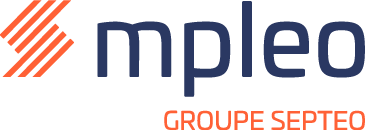Human Resources professionals face a unique combination of challenges: a persistent talent shortage, increasing regulatory complexity, and growing demands for a personalised employee experience. In this context, generative AI – until recently confined to technical or back-office applications – is making a notable entrance into the HR domain.
Tools such as ChatGPT or specialised chatbots now enable natural conversations, content creation, document summarisation, and even personalised recommendations. Far from being a gimmick, this technology is emerging as a practical and adaptive AI assistant. It provides HR departments with a concrete way to manage administrative workload, enhance internal service quality, and free up time for higher-value tasks.
What is Generative AI?
Before delving further, let’s briefly recall what generative artificial intelligence is. Unlike traditional AI – often based on fixed rules or predictive algorithms – generative AI can produce original content (text, images, audio, etc.) from natural language instructions.
Thanks to models trained on vast datasets, it can write, summarise, answer questions, or generate ideas in a fluid manner. Its main advantage? It’s accessible to everyone: a simple prompt is all it takes to initiate content creation. This makes it a promising tool for cross-functional roles such as HR.
- Multilingual job adverts tailored to your Company’s tone of voice, values and culture
- Personalised responses to applicants to create a smoother and more responsive candidate experience
- Summarising feedback and evaluation processes to simplify the task for managers, prevent information loss and avoid duplication
- Content creation for employees, such as onboarding documents or internal FAQs
- Support in preparing documents for works councils or health & safety committees, helping HR teams save time and focus on higher-value tasks
As long as prompts are well-designed, this content can be produced quickly, updated easily, and tailored to different audiences. It also ensures greater consistency in HR communications, both internally and externally. However, this efficiency gain from generative AI tools does come with limitations.
The limits of the AI assistant
Despite its advances, AI lacks human intuition and emotional awareness. It cannot yet demonstrate empathy or ethical judgement. It remains blind to the unspoken, to company culture, and to the relational aspects that are often critical to fair and sustainable HR decision-making. AI should therefore be seen as a support tool — never a substitute for HR teams.
In sensitive situations, AI can even become counterproductive. Interpersonal conflicts, for example, require a nuanced reading of emotions, non-verbal cues, and implicit dynamics — things only a trained and experienced human can interpret. The same applies to dismissals or corrective interviews.
4 tips to start using this AI assistant effectively
Adopting an AI assistant in Human Resources is more than just a technological implementation — it’s a shift in mindset and a transformation of practices that requires method, education, and forward planning. Here is a short but essential roadmap for integrating AI meaningfully and sustainably into your HR function.
Define clear use cases
Rather than starting with the tool’s features, begin with the real pain points in your HR day-to-day. Which tasks cause frustration or confusion for employees? Which processes could benefit from greater speed or consistency? AI should never be a gimmick — it must be a targeted response to a real need. By identifying low-value tasks, you can pinpoint where AI can truly simplify work without replacing human interaction.
Chatbot Brain, the new assistant for your HR needs
At Septeo HR, we’ve chosen to integrate generative AI into our HRIS through our chatbot, Brain. Our tool is designed to answer the most common questions from both employees and HR professionals, all while ensuring data confidentiality.
Its mission: to be a useful and secure AI assistant.
Request a demo of our AI assistant
An AI assistant yes… but always under human supervision
Generative AI presents a real opportunity to reinvent HR practices: time savings, greater responsiveness, and improved communication quality. It allows HR teams to focus on what truly matters.
But this technology remains a tool. It cannot grasp nuance, emotion, or the complexities of human relationships. That’s why it must be used wisely — as a support, not a replacement. The goal is clear: to turn generative AI into a reliable assistant, guided and overseen by humans.




